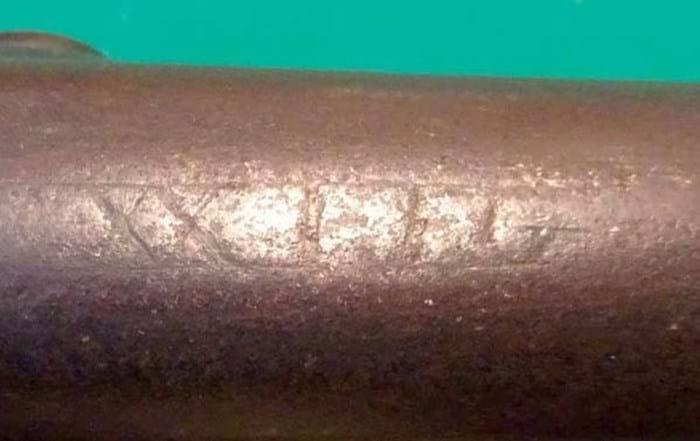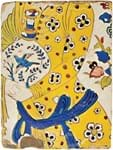This was the single-shot weapon that built the British Empire and (key to its collecting appeal) was the gun used by both sides in the American struggle for independence.
The Bess was made in several patterns and received many incremental changes in design across its century of service.
The Long Land Pattern gun offered by antique arms and militaria specialist Wallis & Wallis (22% buyer’s premium) in Lewes on June 6 was the 1756 pattern with a 4ft 3in (1.2m) barrel.
As well as crowned proof marks, the lock has the name Farmer and the date of issue 1758. James Farmer was (although a Quaker and a pacifist) among the most prolific of the Birmingham gun makers in this period, producing musket locks from the 1740s.
Farmer later partnered with Samuel Galton to form the firm of Farmer & Galton that also did a significant amount of Board of Ordnance business.

A detail of the Flintlock Long Land Pattern smoothbore musket – or Brown Bess – that made £13,500 at Wallis & Wallis.
Another appeal of this gun (in generally good period condition with its original socket bayonet with leather scabbard) was the engraved letters XX Rgt to the barrel, suggesting it had seen action with the 20th Regiment of Foot (1751-82).
‘The Two Tens’ fought in the Seven Years War and in the American War of Independence, earning honours at the Battle of Minden (1759) and the relief of Quebec (1776) before later surrendering at Saratoga.
Guns of this type are increasingly sought after and harder to find. Some good examples with provenance have made close to $50,000 in the US. Estimated at £1500-2500, this gun offered in East Sussex brought £13,500.
Birmingham maker
A similar Long Land Pattern gun sold in the same sale at its top estimate of £3000. Made by Thomas Ketland & Co, a Birmingham maker founded c.1760, it was engraved in script to the brass butt plate Lt. Colo. Waite and to the barrel Royal Welsh Rgt.
The regiment served in some of the best-known engagements of the war of independence including Bunker Hill (1775) and Yorktown (1781), where it was the only British regiment not to surrender its colours.
















